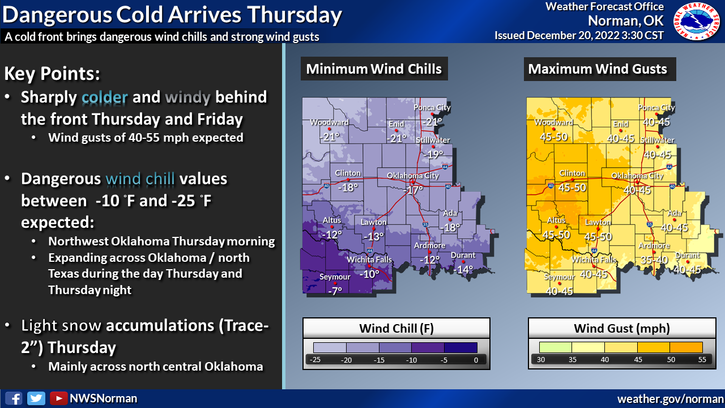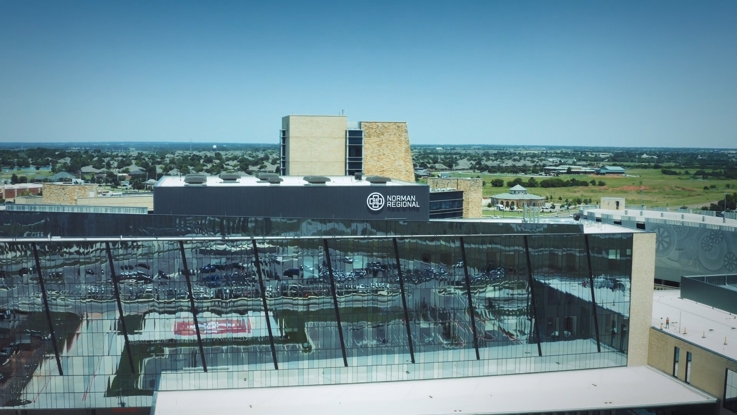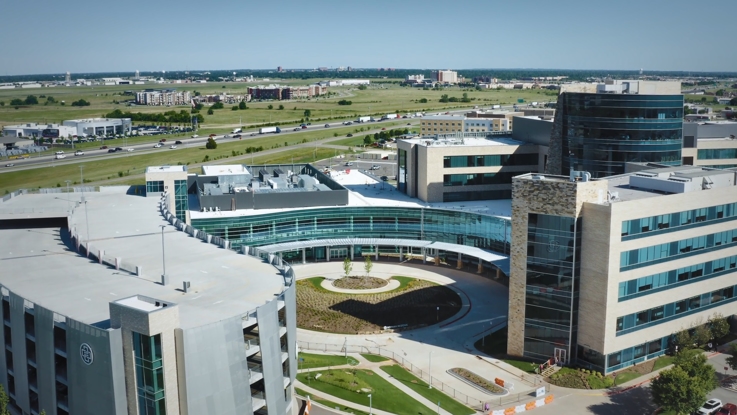Norman Regional: Dangerous Wind Chills
- Category: News
- Posted On:

Dangerous temperatures and wind chills are expected to mark winter’s arrival in Oklahoma this week. Frostbite can occur in 15 minutes or less at wind chill values of 18 degrees below zero or lower.
The Norman National Weather Service (NWS) is calling for dangerous wind chills late Thursday and into Friday morning.
A cold front will blow through the state on Thursday, according to the NWS, with temperatures dropping quickly. Winds will become strong, with wind chill values expected to dip well below zero.
As the cold front moves through, wind chill values late Thursday into Friday morning are expected to be between -10 and -30 degrees. It’s especially important to keep a close eye on children, the elderly, and your pets in these dangerous temperatures.
Norman Regional doctors warn against the possibility of hypothermia and frostbite during these dangerously low temperatures.

Dr. Raghuveer Vedala, a board-certified family medicine physician at Norman Regional’s Primary Care – South OKC clinic says, "'weather' you're a Game of Thrones fan or not - winter is indeed coming. We must prepare!"
He continued stating, "With winter storms come extremely cold temperatures, so we must be prepared for anything including power failures and icy roads. Not to mention using space heaters and fireplaces can increase risks of household fires and even carbon monoxide poisoning.”
Dr. Vedala warns, “So please, be wary and prepare. “Infants and elderly are particularly at risk from these extremely cold temperatures but it’s important that all of us take necessary precautions and plan ahead."
Hypothermia is a Medical Emergency.
Hypothermia is caused by prolonged exposure to very cold temperatures. When exposed to cold temperatures, your body begins to lose heat faster than it’s produced. Lengthy exposures will eventually use up your body’s stored energy, which leads to lower body temperature, according to the Centers for Disease Control and Prevention (CDC).
Dr. Vedala says to keep a close eye on the kiddos. "Children are more at risk than adults because of their little bodies, and they lose heat more quickly. They may be having such a blast playing outside in the snow that they forget to come inside! So, we need to keep an eye on them," Vedala says.
If your body temperature is too low, it can affect the brain, making the person unable to think clearly or move well. This makes hypothermia especially dangerous, because a person may not know that it’s happening, and won’t be able to do anything about it. Hypothermia is a medical emergency. If you notice any of the signs, including the person’s temperature reading below 95 degrees, get medical attention immediately!
“Some signs may be shivering (usually first sign), but then sluggishness, clumsiness, or even slurring of words can occur,” Dr. Vedala says. “If you are concerned about hypothermia – call 911 right away. Until help arrives, get the person indoors, warm them with blankets, and get them something warm to drink.
If you're not able to get medical help right away, try to warm the person up. This includes:
- Get the person into a warm room or shelter.
- Remove any wet clothing the person is wearing.
- Warm the center of the person’s body—chest, neck, head, and groin—using an electric blanket, if available. You can also use skin-to-skin contact under loose, dry layers of blankets, clothing, towels, or sheets.
- Warm drinks can help increase body temperature but do not give alcoholic drinks. Do not try to give beverages to an unconscious person.
- After body temperature has increased, keep the person dry and wrap their body, including their head and neck, in a warm blanket.
- Get the person proper medical attention as soon as possible.
The CDC defines frostbite as a type of injury caused by freezing. It leads to a loss of feeling and color in the areas it affects, usually extremities, like fingers and toes. Frostbite can permanently damage the body, and severe cases can lead to amputation.
“Your fingers, toes, and nose are at highest risk of getting frostbite,” Dr. Vedala says. “This is because they don’t have major muscle groups to generate heat. They rely on blood flow. So keep them warm with mittens, socks, and warm boots. Protect your ears with hats or beanies. However, it’s imperative that you keep your core – your torso – warm. Doing this will not only reduce your risk of hypothermia, but a warm core also pushes warm blood out to the extremities reducing your risk of frostbite."
What Are the Signs and Symptoms of Frostbite?
“The frozen skin may start to hurt or burn, but can quickly go numb. It may turn white or pale gray and sometimes even form blisters,” states Dr. Vedala.
If you notice redness or pain in any skin area, get out of the cold or protect any exposed skin—frostbite may be beginning.
A person who has frostbite may not know they have it until someone else points it out. This is because the frozen parts of their body are numb. If you notice signs of frostbite on yourself or someone else, seek medical care.
If (1) a person shows signs of frostbite, but no signs of hypothermia and (2) immediate medical care is not available, do the following:
- Get the person into a warm room as soon as possible.
- Unless absolutely necessary, do not walk on feet or toes that show signs of frostbite—this increases the damage.
- Do not rub the frostbite area with snow or massage it at all. This can cause more damage.
- Put the areas affected by frostbite in warm—not hot—water (the temperature should be comfortable to the touch for unaffected parts of the body).
- If warm water is not available, warm the affected area using body heat. For example, you can use the heat of an armpit to warm frostbitten fingers.
- Do not use a heating pad, heat lamp, or the heat of a stove, fireplace, or radiator for warming. Affected areas are numb and can easily burn.
Don’t substitute these steps for proper medical care. Frostbite should be checked by a healthcare provider.

Dr. Vedala also reminds us to make sure our vehicle is prepared for traveling in the subzero temps. “Make sure the radiator system is serviced, antifreeze levels are adequate and you have a full tank of gas. Have some emergency supplies in your car including blankets, first aid kit, jumper cables, windshield scraper, flashlight, and batteries, and your phone is fully charged in case you need to call emergency services.”
Dr. Vedala spoke with KOCO 5 News about the dangerous cold temps.
Norman Regional Health System operates four 24/7 emergency rooms in the southcentral Oklahoma region.
Norman Regional Hospital, Norman Regional Nine, Norman Regional HealthPlex, and Norman Regional Moore are all open and ready to help you with your medical needs.
If you or someone you know is having a medical emergency, call 911. Stay safe and warm!



